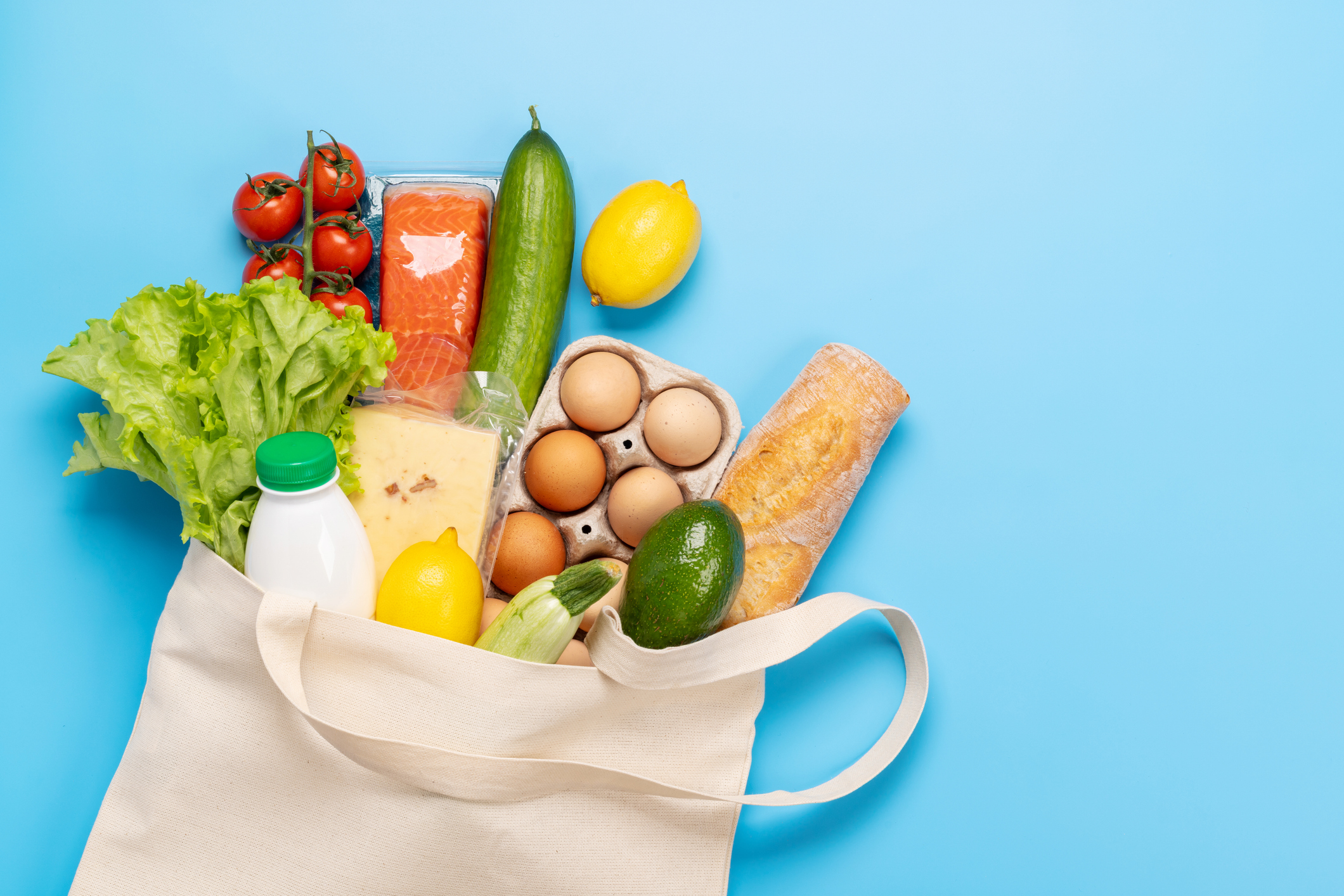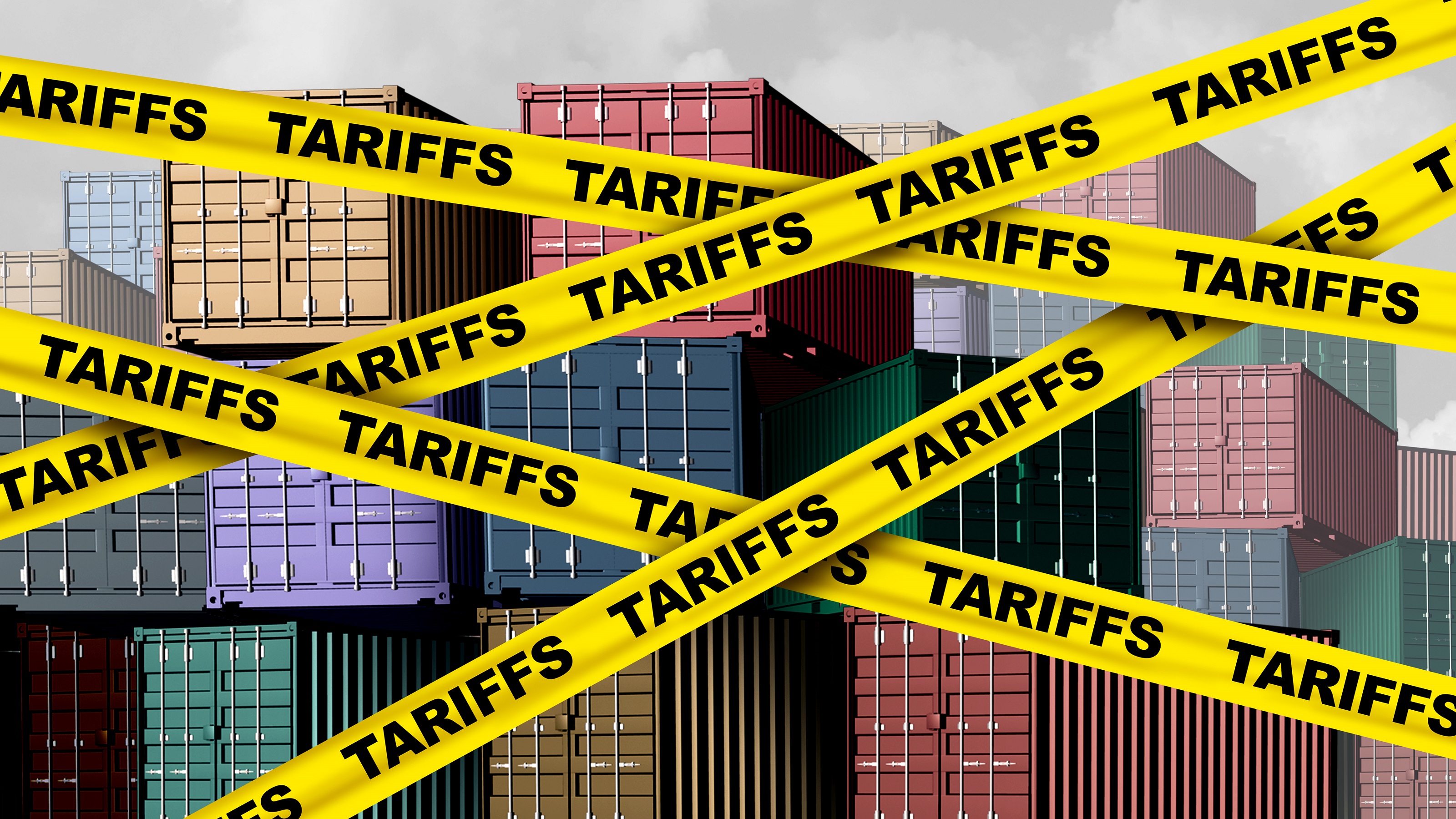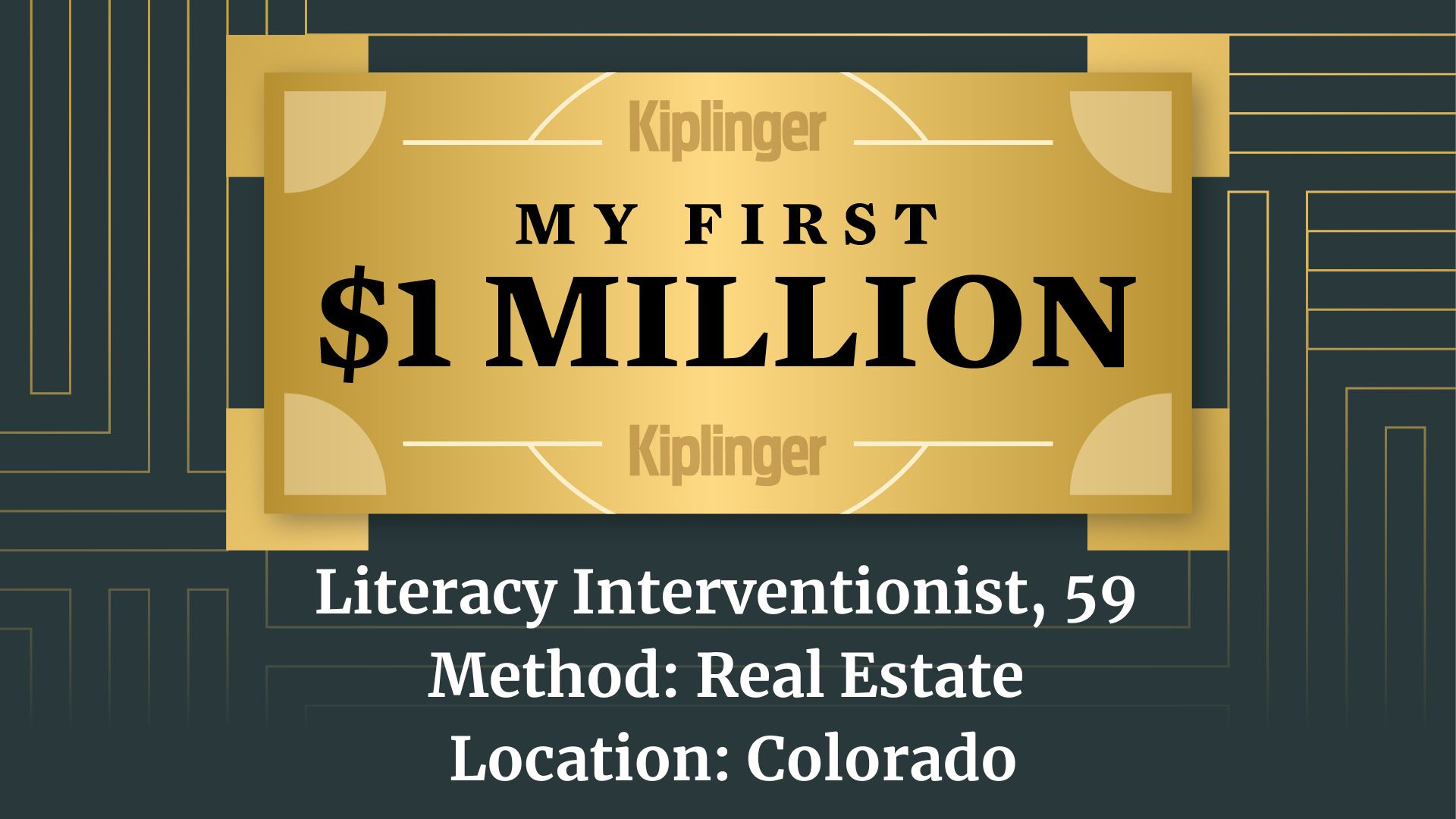The Best Consumer Staples Stocks To Buy
In an uncertain market, the best consumer staples stocks provide consistency and stability to portfolios.


There's no such thing as a "sure thing" in the stock market. But when investors need to protect their portfolios against the winds of uncertainty, they frequently flock to the relative safety of consumer staples stocks.
Small wonder.
The consumer staples sector is made up of companies that produce or sell the basic goods people need day in and day out. During times of economic difficulty – including slowdowns and recessions – people might rein in their spending across any number of categories, but they still need to eat and keep clean – providing a steadier baseline of demand for consumer staples stocks than many other industries enjoy.

Sign up for Kiplinger’s Free E-Newsletters
Profit and prosper with the best of expert advice on investing, taxes, retirement, personal finance and more - straight to your e-mail.
Profit and prosper with the best of expert advice - straight to your e-mail.
Today, we'll take a closer gander at the sector: how it's defined, why investors seek exposure to it, and how to find the best consumer staples stocks to buy.
What are consumer staples stocks?
The short answer: Consumer staples stocks are companies whose primary businesses involve producing or selling basic goods, such as groceries and personal-care items.
For a more complete answer, let's look to the Global Industry Classification Standard – a framework used by major index providers to help classify public companies. According to the GICS …
"The Consumer Staples sector comprises companies primarily engaged in: food and staples retailing and distribution, such as owners and operators of hypermarkets, super centers, and pharmacies; producing food, beverage, and tobacco products; and manufacturing household and personal products, such as detergents, soaps, diapers, cosmetics, and perfumes."
Why do investors buy consumer staples stocks?
Consumer staples stocks are similar to the healthcare and utility stocks in that they deal in the business of necessities – items people ultimately must pay for, rain or shine.
As a result, consumer staples are considered to be defensive stocks. They generate relatively stable revenues, they're not as economically sensitive, and they can produce oodles of free cash – cash that is frequently handed back to shareholders in the form of above-average dividends.
The defensive underlying businesses and those cash payouts are a powerful 1-2 punch that can provide vital ballast to portfolios during periods of high volatility.
Naturally, there's no guarantee that staples will always hold up their end of the bargain – consumer staples have historically underperformed during a handful of downturns – but they've frequently proven their worth during bear markets. On a total-return basis (price change plus dividends), consumer staples outperformed the S&P 500 during the Great Recession (-29% to -55%), 2020 COVID crash (-24% to -34%), 2022 bear market (-9% to -21%). And those were just sector averages; some individual names performed even better.
This protection comes at a price, however – specifically, lesser upside potential during "risk-on" periods for the market. While consumer staples enjoy high baseline demand, there's not much additional growth potential during periods of economic growth. After all, you're probably not going to buy double the number of diapers or twice as much soap as you need just because things are going well; that money is likely going toward other expenditures (on the things consumer discretionary stocks provide).
How to find the best consumer staples stocks to buy
We can't tell you exactly what you'd want out of a consumer staples stock – you might prefer larger companies to smaller firms, or you might be insistent on only buying at deeply discounted valuations.
But we can help you start your search with a basic quality screen.
To get to the following list of the best stocks to buy in the consumer staples sector, we looked at those …
- Within the S&P Composite 1500: This index is a combination of the S&P 500, S&P MidCap 400, and S&P SmallCap 600. This screen allows for stocks of different sizes, but it still represents roughly 90% of America's market capitalization, weeding out the smallest stocks.
- With a long-term estimated earnings-per-share growth rate of at least 5%: Consumer staples stocks aren't exactly "growthy" stocks, per se, but we still want to buy companies that are able to improve their profits over time. (Just remember: Expectations don't guarantee results.)
- With at least five covering analysts: We'd like to look at stocks that are on Wall Street analysts' radar, which makes it likelier that there's both more reporting and more insights on these companies. The more research we have at our disposal, the more educated a decision we can make.
- With a consensus Buy rating: All of the stocks must have an average broker recommendation of 2.5 or less within S&P Global Market Intelligence's ratings scale. S&P Global Market Intelligence converts analysts ratings into a numerical scale. Anything with a score of 2.5 or less is considered a Buy.
- With a dividend yield of at least 1.5%: Dividends are often an important consideration for investors buying consumer staples stocks. So here, we want to make sure that these stocks produce, at the very least, a little more income than the S&P 500 (current yield: 1.3%).
| Company (Ticker) | Long-term EPS growth rate | Analysts' consensus recommendation | Dividend yield |
|---|---|---|---|
| Lamb Weston (LW) | 11.0% | 1.39 (Strong Buy) | 1.7% |
| Mondelez International (MDLZ) | 6.8% | 1.40 (Strong Buy) | 2.6% |
| Constellation Brands (STZ) | 9.9% | 1.60 (Buy) | 1.5% |
| Coca-Cola (KO) | 6.0% | 1.71 (Buy) | 3.1% |
| Philip Morris International (PM) | 9.1% | 1.88 (Buy) | 5.1% |
| Colgate-Palmolive (CL) | 8.4% | 1.91 (Buy) | 2.1% |
| Procter & Gamble (PG) | 7.9% | 1.92 (Buy) | 2.4% |
| Sysco (SYY) | 9.4% | 2.00 (Buy) | 2.8% |
| Target (TGT) | 8.1% | 2.09 (Buy) | 3.1% |
| Keurig Dr Pepper (KDP) | 7.0% | 2.11 (Buy) | 2.5% |
Related content
Get Kiplinger Today newsletter — free
Profit and prosper with the best of Kiplinger's advice on investing, taxes, retirement, personal finance and much more. Delivered daily. Enter your email in the box and click Sign Me Up.
Kyle Woodley is the Editor-in-Chief of WealthUp, a site dedicated to improving the personal finances and financial literacy of people of all ages. He also writes the weekly The Weekend Tea newsletter, which covers both news and analysis about spending, saving, investing, the economy and more.
Kyle was previously the Senior Investing Editor for Kiplinger.com, and the Managing Editor for InvestorPlace.com before that. His work has appeared in several outlets, including Yahoo! Finance, MSN Money, Barchart, The Globe & Mail and the Nasdaq. He also has appeared as a guest on Fox Business Network and Money Radio, among other shows and podcasts, and he has been quoted in several outlets, including MarketWatch, Vice and Univision. He is a proud graduate of The Ohio State University, where he earned a BA in journalism.
You can check out his thoughts on the markets (and more) at @KyleWoodley.
-
 Two Don'ts and Four Dos During Trump's Trade War
Two Don'ts and Four Dos During Trump's Trade WarThe financial rules have changed now that tariffs have disrupted the markets and created economic uncertainty. What can you do? (And what shouldn't you do?)
By Maggie Kulyk, CRPC®, CSRIC™
-
 I'm Single, With No Kids: Why Do I Need an Estate Plan?
I'm Single, With No Kids: Why Do I Need an Estate Plan?Unless you have a plan in place, guess who might be making all the decisions about your prized possessions, or even your health care: a court.
By Cynthia Pruemm, Investment Adviser Representative
-
 Two Don'ts and Four Dos During Trump's Trade War
Two Don'ts and Four Dos During Trump's Trade WarThe financial rules have changed now that tariffs have disrupted the markets and created economic uncertainty. What can you do? (And what shouldn't you do?)
By Maggie Kulyk, CRPC®, CSRIC™
-
 I'm Single, With No Kids: Why Do I Need an Estate Plan?
I'm Single, With No Kids: Why Do I Need an Estate Plan?Unless you have a plan in place, guess who might be making all the decisions about your prized possessions, or even your health care: a court.
By Cynthia Pruemm, Investment Adviser Representative
-
 Most Investors Aren't as Diversified as They Think: Are You?
Most Investors Aren't as Diversified as They Think: Are You?You could be facing a surprisingly dangerous amount of concentration risk without realizing it. Fixing that problem starts with knowing exactly what you own.
By Scott Noble, CPA/PFS
-
 My First $1 Million: Literacy Interventionist, 59, Colorado
My First $1 Million: Literacy Interventionist, 59, ColoradoEver wonder how someone who's made a million dollars or more did it? Kiplinger's new My First $1 Million series uncovers the answers.
By Joyce Lamb
-
 Will My Children Inherit Too Much?
Will My Children Inherit Too Much?If you worry about how your children will handle an inheritance, you're not alone. Luckily, you have options — from lifetime gifting to trusts — that can help.
By Mallon FitzPatrick, CFP®, AEP®, CLU®
-
 Charitable Giving Lessons From Netflix's 'Apple Cider Vinegar'
Charitable Giving Lessons From Netflix's 'Apple Cider Vinegar'Charity fraud is rife, and a Netflix series provides a timely warning about donating money to a good cause without looking into its background.
By Peter J. Klein, CFA®, CAP®, CSRIC®, CRPS®
-
 What Happens To Mortgage and Savings Rates If Trump Fires Jerome Powell?
What Happens To Mortgage and Savings Rates If Trump Fires Jerome Powell?President Donald Trump expressed his desire to remove Fed Chair Jerome Powell. If the president is successful, how would it impact your savings accounts?
By Sean Jackson
-
 Why You Need a Trusted Contact for Your Brokerage
Why You Need a Trusted Contact for Your BrokerageYour brokerage or bank needs someone to reach out to if it's concerned you're experiencing fraud or cognitive decline. That's where a trusted contact can help.
By John Waggoner